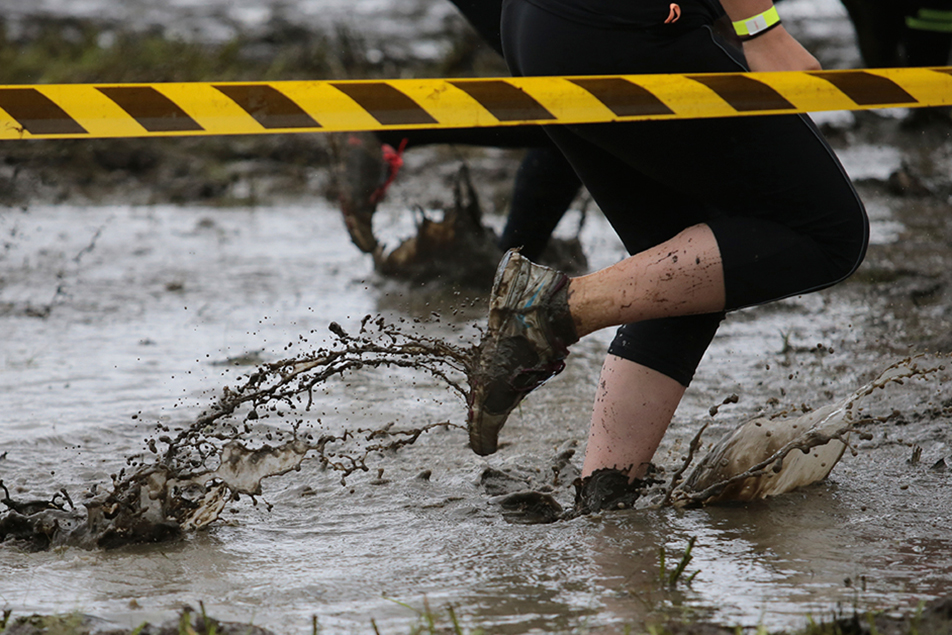
Obstacle course races – often referred to generically by the name of the most well-attended event, the Tough Mudder – have been on a popularity streak since the early 2000s, drawing an increasing number of adventurous athletes every year. With intimidating titles like “Spartan Beast” and “Rugged Maniac,” the fitness fad has gained a lot of respect among the weekend warrior crowd. Mackenzie Clark*, MS, LAT, ATC, athletic training lead, Parkview Sports Medicine, says the trick is in the training. And while you might think you have to recreate the course to properly prepare, she has a much simpler plan.
If you are looking to test your strength, endurance and mental resilience while having fun with a group of friends, a Tough Mudder may be a great challenge for you. Training for an obstacle course race consists of upper body and core strengthening, plyometric training and cardiovascular endurance. Don’t worry; you don’t need to recreate the course or even belong to a gym to successfully prepare.
Upper body strengthening is a must when training for a Tough Mudder. A lot of the obstacles along the course consist of pulling, hanging, crawling and/or climbing; using your upper body muscles to pull, push or hang to complete the challenge. For example, the obstacle “Everest 2.0” is a 15-foot quarter pipe in which you have to run, jump and pull yourself to the top. One exercise to help you train for this obstacle is the pullup. A pullup activates and strengthens many different muscles, such as the trapezius, rhomboids, pectoralis major and minor, biceps brachii, deltoids, latissimus dorsi, as well as forearm and back musculature. Just hanging on a pullup bar can simulate the same motion and activate and strengthen the same muscles as it would to complete the “King of Swingers” obstacle on a course.
It is also important to strengthen your core. The obstacle “Kiss of Mud 2.0” is a crawling challenge. Not only do you have to use upper body strength to crawl in the mud and underneath barbed wire, you will also have to use your core muscles to help propel you forward. A core exercise that will help you train for this obstacle is the army crawl. Start in an elbow plank position. Using your forearms pull yourself forward. Try not to use your legs as you pull yourself forward.
Plyometric exercises will also help on race day. These link strength with speed movements, which produces power. Examples of plyometric exercises are box jumps, burpees and squat jumps. These type of activities will help increase your power.
Lastly, cardiovascular endurance training is important when getting from obstacle to obstacle. A Tough Mudder course is 10-12 miles long. Therefore, it is important that you can at least jog for 20-30 minutes at a time. The race is not timed, so speed isn’t important. Tough Mudder training should be fun! Break up your workouts to incorporate a 20-minute jog for a warm-up. Then work in 20 minutes of upper body strengthening activities, plyometric exercises and core exercises. Complete your workout with a 20-minute jogging cool-down.
Any obstacle course race is challenging and best completed with friends. Training together will help keep you accountable as well as make the experience even more rewarding.
*Mackenzie is a Parkview Sports Medicine athletic trainer training for her first Tough Mudder in Long Island, NY.
Resources
http://blog.codyapp.com/2013/09/18/crawling-exercises-fitness-quadrupedal-movement/
http://breakingmuscle.com/strength-conditioning/pull-up-vs-chin-up-a-comparison-and-analysis
https://toughmudder.com/obstacles
https://www.acsm.org/docs/current-comments/plyometrictraining.pdf